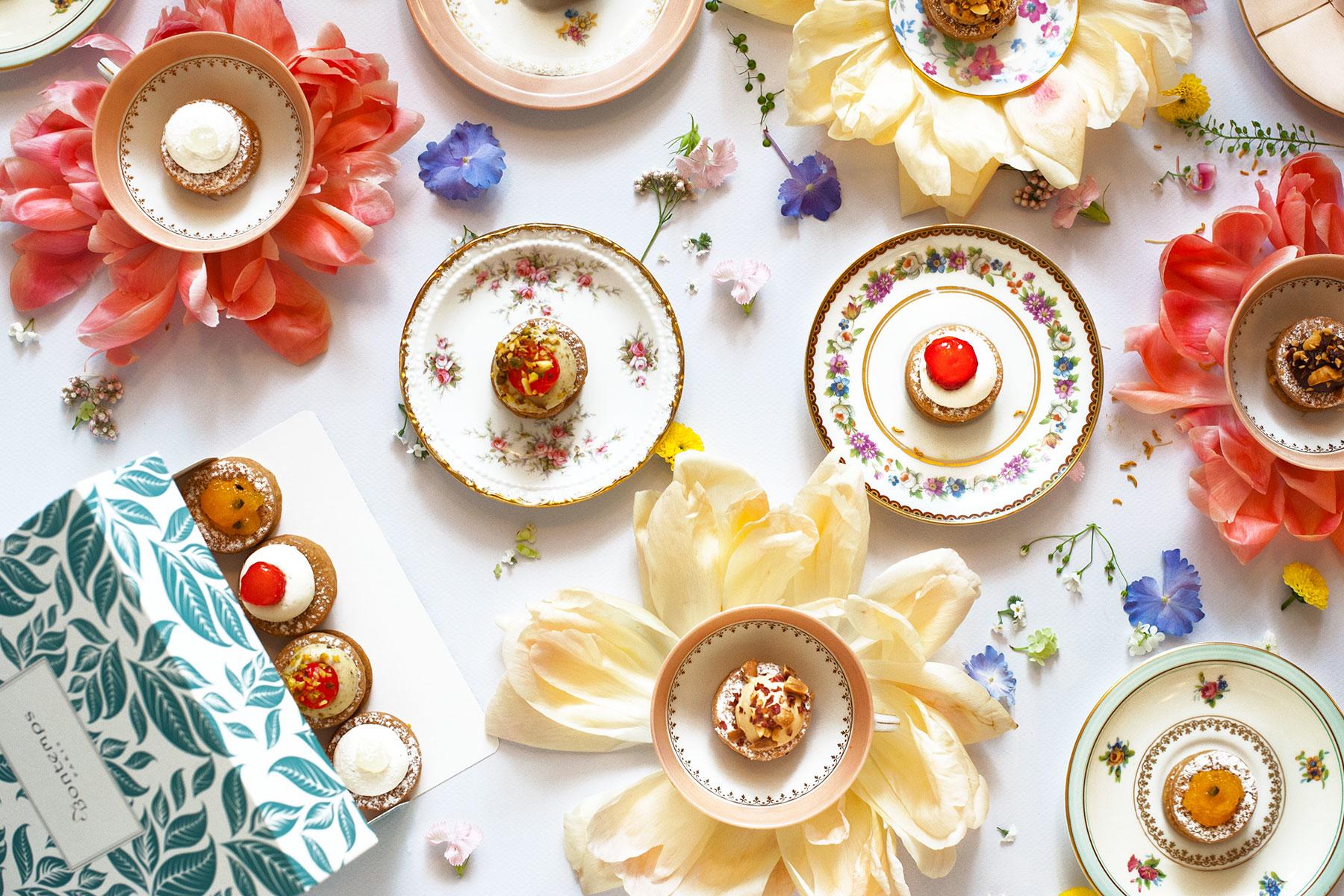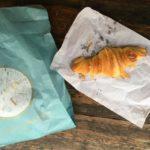A new generation of pastry chefs is innovating pastry traditions in Paris.
It’s no surprise that eating a buttery, flaky pastry is often at the top of the to-do lists for visitors to Paris, but discerning palates would do well to do their research first. In recent years, Paris’ famous millefeuilles and éclairs have been so industrialized as to become shadows of their former selves; today, 30 to 40 percent of Parisian croissants are made in a centralized plant, frozen, and heated on-site.
But a new generation of creative, innovative pastry chefs is bringing novelty to one of the oldest pastry traditions in the world, by putting a contemporary spin on classic pastry recipes or developing super-modern creations that buck tradition entirely. At these 15 pastry shops, we promise you won’t find any frozen pastries.
Top Picks for You
Plaza Athénée
Pastry chef Angelo Musa brings quite a bit of novelty to a very established dining room at this luxury hotel. While Musa is originally from Eastern France, he has long been intrigued by the cuisine of Japan. His first buche de Noël—a classic French Christmas cake—at the Plaza Athénée featured an audacious touch of yuzu citrus amidst the chestnut, adding lightness and acidity to what is typically a rich and often cloying creation.
Musa’s pastry philosophy is to marry textures and flavors without ever making things too complex to enjoy. To this end, he created the 100% Vanilla, a four-layered pastry comprising a soft cake, a salted almond-vanilla crisp, a vanilla cream, and a vanilla mousse. It’s said that this cake so charmed chef Alain Ducasse that is paved the way for Musa’s invitation to join the Plaza Athénée team.
Le Meurice
Cedric Grolet is at the helm of the pastry kitchen at one of Paris’s top luxury hotels, Le Meurice. It is here that he has become famous not only for his beautiful, wholly Instagrammable creations (including an ambitious pastry Rubik’s Cube!) but also for his reinvented French pastry classics, like a lemon tart with olive oil vinaigrette. His pastries stand out for featuring surprisingly little sugar (despite Grolet’s expertise in sugar art–he won the National Trophy in 2005), and he was rewarded for his efforts by his peers with the Best Pastry Chef of the Year Award in 2015.
Recommended Fodor’s Video
Nomos
Guillaume Sanchez was a fan favorite in the most recent season of the French Top Chef, and at his restaurant, Nomos, he continues to surprise and captivate diners with sweet and savory pastry creations. The spare, Scandinavian design of the restaurant mirrors the cuisine, heavily inspired by Denmark’s culinary revolution. This chef’s unbridled imagination is just barely harnessed by his firm grasp of classic technique; coconut mousse with mint sorbet and dehydrated yogurt shavings, or marinated fennel with lemon butter, tea ice cream, and citrus caviar may be some of the desserts on the six- or nine-course tasting menu.
Des Gâteaux et du Pain
The name of Claire Damon’s shop, which translates to “Cakes and Bread,” perfectly describes the feeling of this modern space where these two linked arts coexist, albeit separately. On the cakes side of the shop, visitors will find an ever-revolving selection of ten iterations of Damon’s pastry philosophy: fresh, seasonal fruit is nearly always the centerpiece, and classic French cakes get a modern makeover. One of the best examples is the “Lipstick,” an ever-changing pastry featuring a two-toned look that might combine cherry and pistachio, pineapple and lime, or apricot and almond, depending on the time of year.
While it doesn’t fall into her seasonal fruit wheelhouse, Damon’s millefeuille is a true tour de force. The oft-industrial combination of puff pastry and pastry cream returns to its origins in Damon’s version, which does away with the usual sickly sweet royal icing topping for a perfectly caramelized puff pastry sandwiching a light Tahitian vanilla pastry cream.
L'Éclair de Génie
Christophe Adam has long been a wunderkind of the pastry scene, and with the establishment of his Éclair de Génie stores, he also launched the trend of pastry shops specializing in only one sweet treat. In Adam’s case, this sweet treat is the éclair: a pastry whose name translates to “lightning” (as in: eaten faster than a bolt of lightning). The perfected pate à choux encases flavor combos far more interesting than the classic chocolate or coffee, ranging from orange-pistachio to single-origin Tainori dark chocolate to Adam’s personal favorite, salted butter caramel, a nod to his Breton roots.
You can now also find Adam at Dépôt Légal, his new breakfast, lunch, and brunch spot where he makes a mean kouign amann, a Breton cake whose name literally translates to butter cake (it delivers on the promise).
Popelini
Also in the category of single-pastry shops is Popelini, named for the Italian pastry chef to Catherine de Medici who invented the famous cream puff (possibly as an answer to Medici’s obsession with height – she is credited as being one of the first women to wear high-heeled shoes when she wed France’s King Henri II). The puffs at Popelini are arranged in the pastry window like little jewels—a nod to chef Lauren Koumetz’s time spent working with jeweler Van Cleef & Arpels—and feature, on any given day, a rotating array of flavors like dark chocolate, lemon praline, salted butter caramel, or tiramisu.
INSIDER TIPWhile you can’t buy them in the shop, you can special order croquembouches. This impressive tiered masterpiece of choux united by threads of crunchy caramel is the traditional wedding cake in France.
Bontemps
Sisters Fiona Leluc and Fatina Faye are the masterminds behind this little shop famous for its sablés, a classic French shortbread. The bite-size sandwich cookies are flavored with only the best ingredients: Piedmont hazelnuts and chocolate are the base of the gianduja sandwich, reminiscent of Nutella, and the house-made praline flavor really takes the proverbial cake.
INSIDER TIPWhile all of the sablés are sold as single-portion cookies, you can also buy a larger heart- or flower-shaped sablé to share.
Benoît Castel
Pastry chef Benoît Castel first made a name for himself at Liberté in the 10th arrondissement, a pastry shop that was decidedly “liberated” from the constraints of tradition with a stark, almost industrial interior that was the perfect showcase for Castel’s pastry creations. While Liberté is still a favorite for some locals, Castel has since moved on to found his eponymous shop, where he has combined his love of both Paris and New York in his personal recipes for pastries like classic French cream tartlets and New York cheesecake.
Gâteaux d’émotions
Philippe Conticini is a name that appears frequently in the pastry world: it seems everyone has been inspired by this chef, the co-founder, along with Thierry Teyssier, of Pâtisserie des Rêves. One of the first to reinvent classic French pastries with less sugar and more flavor, Conticini truly made a name for himself at this shop, whose name translates to “Pastry of Dreams.” Conticini announced in September 2017 that he would be leaving the shop behind in favor of founding his new shop, Philippe Conticini, Gâteaux d’émotions. A host of new creations await, including a possible contender for the new Cronut crown: The Crioche, a decadent combo of croissant and buttery brioche.
Conticini is attributed to the creation of the verrine in 1994, an invention designed to lend more verticality to dishes that were usually relegated to the flatness of a plate. This innovation reminds us a bit of one of the founding fathers of French pastry as we know it today, 18th-century pâtissier Marie-Antoine Carême. Guided by his theory that pastry arts were the “principal branch” of architecture, Carême created elaborate pastry structures made with sugar and marzipan to entice people into his shops. Conticini has, once again, brought French pastry to new heights.
Yann Couvreur
Yann Couvreur earned his stripes in some of the top Paris restaurants before opening his eponymous pastry shop, where he offers a selection of French pastry classics, like a truly excellent lemon tart, as well as a handful of surprises, including a mocha-anise éclair in an innovative rectangular shape. Couvreur seeks to make pastry accessible to the masses, with an open kitchen allowing you to glimpse pastry chefs at work. This shop is also fairly unique in that it offers a place for you to actually eat your pastries, with about fifteen seats at high tables where you can watch the action.
The millefeuille that made Yann Couvreur famous when he was the pastry chef at the Prince de Galles can also be found at this shop: a combination of buckwheat kouign amann and unctuous Madagascar vanilla cream assembled to order. But be careful! Couvreur only makes 50 of these a day, and when they’re gone, they’re gone.
Pâtisserie Michelak
The 2005 World Pastry Champion Christophe Michelak’s eponymous pastry shop offers a variety of pastries and other sweets including Kosmicks, little verrines (sweet treats served in a small vertical glass) to be enjoyed by the spoonful, and Klassicks, which include millefeuille sliced to order as well as Paris-Brest and lemon tarts for eight. The chef’s signature pastry is the Miss K, made with two superposed spheres of choux pastry stuffed with salted caramel pastry cream and topped with caramel whipped cream.
INSIDER TIPMichelak also offers pastry Masterclasses, three-hour specialized pastry courses where you can learn tips and tricks from the best.
Boulangerie Utopie
Boulangerie Utopie may look like a classic neighborhood bakery, but there’s more to this shop than meets the eye. Devoid of marketing froufrou, this bakery has made a name for itself by using high-quality ingredients and injecting a touch of novelty into the most traditional cakes. Sébastien Bruno’s pastries include the Blueberry, featuring shortbread with blueberry compote and vanilla mousse, and the unique Ephemeral Cake marrying all manner of citrus, including blood orange, bergamot, finger lime, and Buddha’s hand.
INSIDER TIPWhile you’re checking out the pastry, don’t neglect the bread! Active charcoal baguette and buckwheat torte are just some of the house specialties, and weekend breads featuring caramelized pumpkin seeds, carrot-violet, or nettle and pine nut appear on Saturday and Sunday.
La Goutte d'Or
Yann Menguy sought with his pastry shop to combine the best of two worlds: the delicacy and technique of haute pastry tradition with the conviviality of the classic coffee shop. The result is a tantalizing combination of Old World and New, where you can enjoy great pastries and great coffee in the same place (an oft-ignored anomaly in the French capital). House specialties include the vanilla tart, which unites smoked Madagascar vanilla and pecans, as well as the eponymous La Goutte d’Or, a superb spiral of chocolate and buckwheat.
INSIDER TIPThis pastry shop also offers something usually relegated to cheese shops: hand-churned beurre de baratte infused in-house with vanilla, yuzu, or truffle.
Plume
Plume, which means “feather” in French, is an apt name for this bakery, where lightness is the name of the game—mousses, genoise sponge cakes, and Chantilly cream are the stars here. The signature dessert belies chef Cécile Coulier’s background as a pastry stylist: the Boule is a little plastic ball much like a snowglobe, filled with chocolate mousse. Or, try the classic Mont-Blanc pastry featuring meringue and pureed chestnut.
Du Pain et Des Idées
We couldn’t keep Christophe Vasseur’s Du Pain et Des Idées off this list, even if Parisians would be aghast at its inclusion: you see, this shop does not actually deal in pastry, but rather in viennoiseries, a separate category including croissants, pains au chocolat, and the house specialty here: the escargot. Escargots or snail shells are most often filled with pastry cream and rum-soaked raisins, but here they take on a completely different identity, with fillings ranging from chocolate-pistachio to cream cheese and berry. Unlike many of his colleagues, who started their pastry training at the tender age of 14, Vasseur only became a baker at 32 years of age. He has more than made up for his lack of experience, winning the Gault Millau prize for best baker in Paris in 2008.
INSIDER TIPThis baker’s bread is, of course, worth crossing town for: the pain des amis or friendship bread takes on a lovely smoky aroma from the wood-burning oven.






